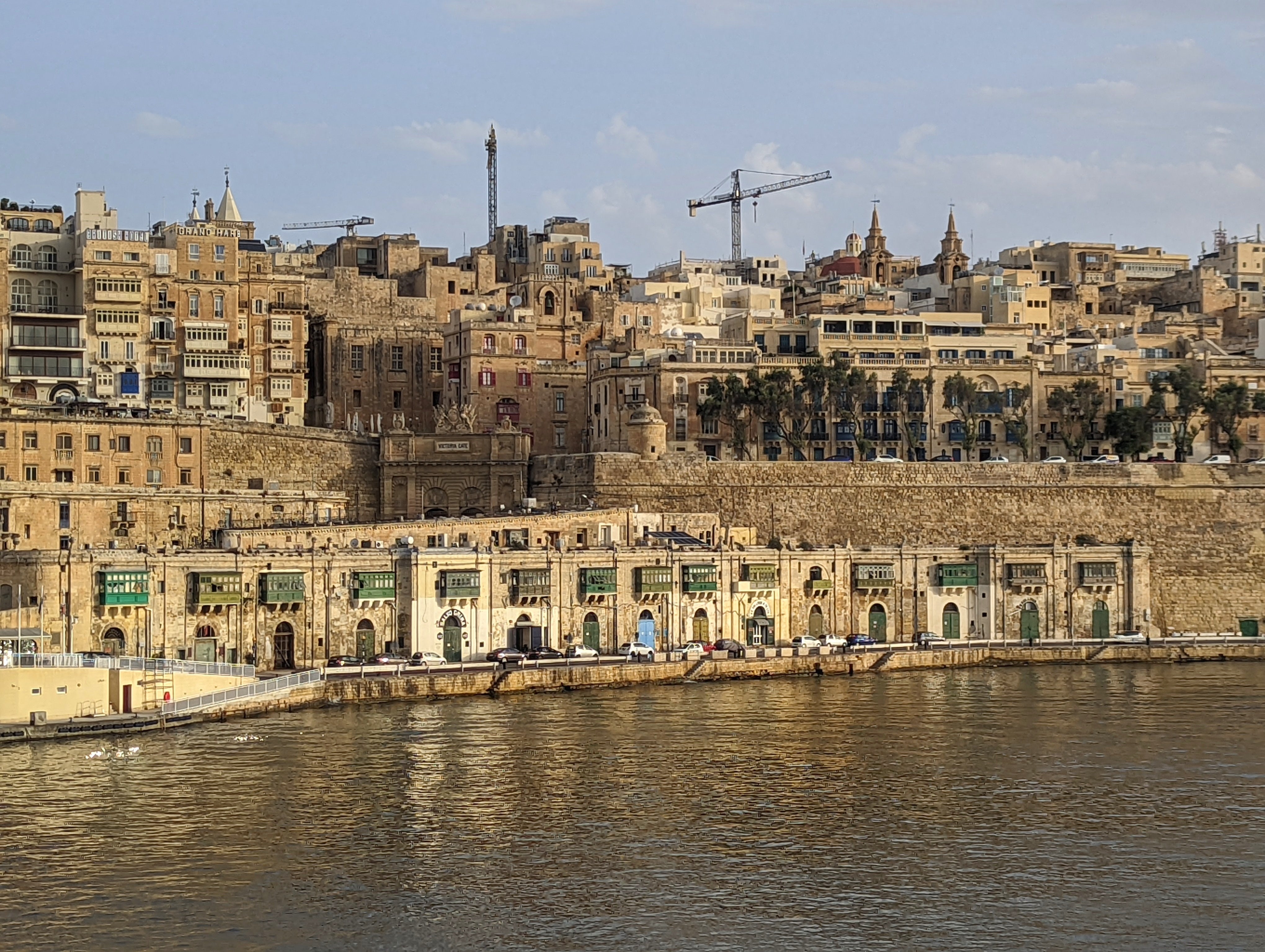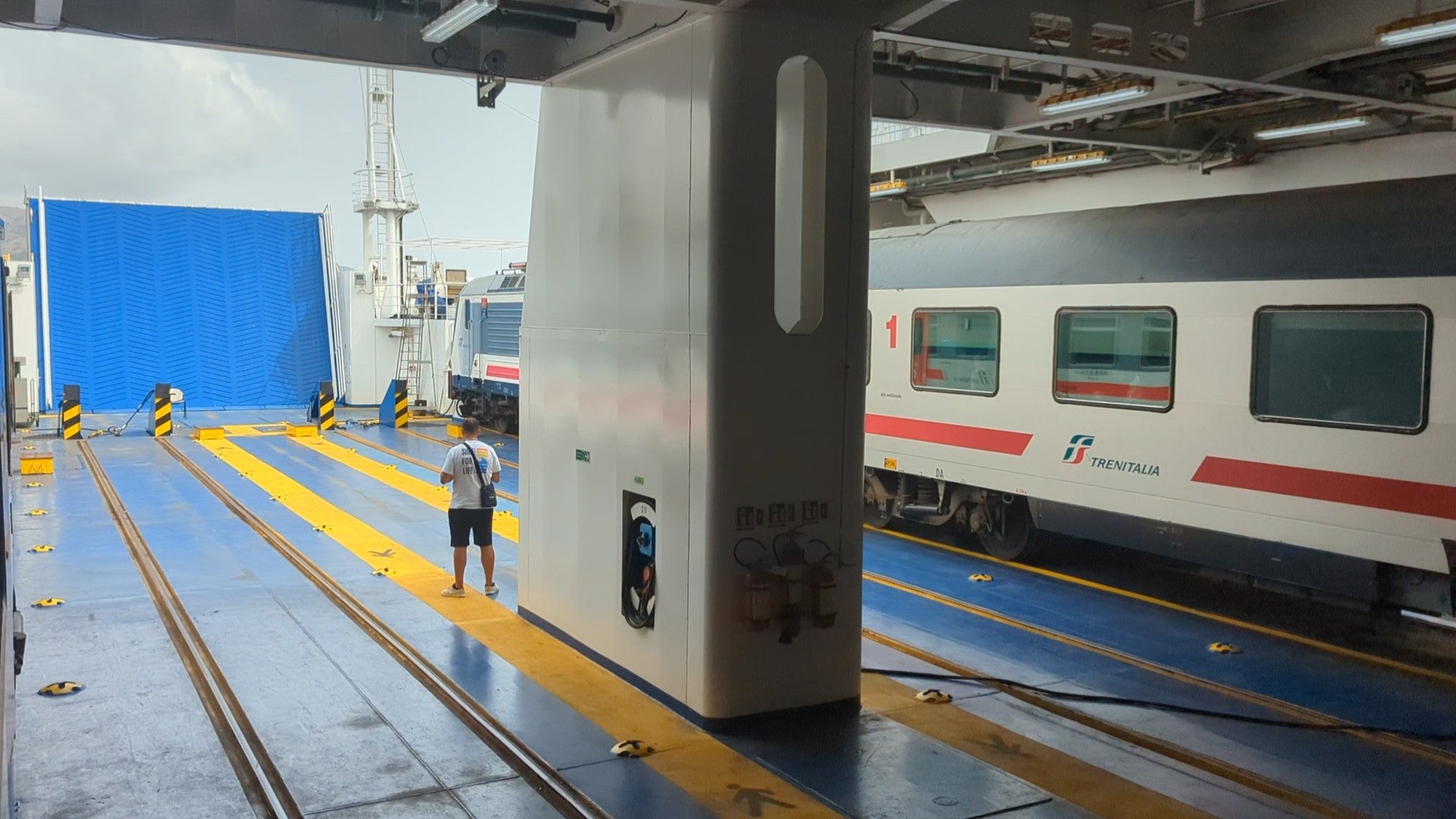Flight-free Malta? It’s easier than you might think
Reaching this Mediterranean island nation by sea makes for an exhilarating adventure, finds Lucie Grace


Deciding to spend a summer in Europe entirely flight-free sounds easy, until you add a small Mediterranean island nation into the mix.
Growing up in Malta in the Nineties was a pretty idyllic time. Temperatures were high, crime was low and the summer holidays were four months long. The friendships I forged over mixtapes at coastal kiosks (since replaced by condominium blocks) are still a huge part of my life, and prior to the pandemic, I returned to the island at least once a year. So it’s no exaggeration to say that, up until 2019, I’d flown in and out of Malta close to 100 times.
As an adult I’d spend evenings on friends’ roof terraces in Valletta, the striking Baroque capital, watching the ferries from Sicily cruise in and out in the Grand Harbour below, and think how romantic it must be to arrive into the city by sea – it’s beautiful by foot, too, but the views from the water would surely be on another level.

So here I was, after 30 years of travelling in and out of Malta by plane, faced with a climate crisis and a conundrum. How would I get to my favourite tiny island for a long overdue visit, while keeping my pledge to be flight-free all summer? Finally, my ferry opportunity dawned – a Virtu ferry from nearby Sicily – and I could finally get excited.
I should begin by shouting from the rafters about how swanky, smooth sailing and downright easy it is to take the ferry to Malta. Maltese company Virtu Ferries has five ships in its fleet, all hyper-modern catamarans that take 90 minutes to get from Pozzallo in Sicily to Valletta in Malta (or vice versa). So I just needed to get to Sicily from where I currently was: Albania.
If you look at Albania and Malta on a map, they don’t look very far apart, in the grand scheme of things. It’s not like, say, Albania to Portugal, which would have been significantly more Med to cross, I thought during my trip to the former, where I’d travelled overland to write about its magical sleepy beaches. Some research revealed that there are two Albanian ports offering sailings to Italy; Durres in the north, and Vlorë further south, where a ship leaves daily at 2pm heading for Brindisi. Given that I’m aiming for Sicily, south it is. I hop on the Starlines ferry from Vlorë for £55.
Read more: Best hotels in Valletta
Finally my ferry opportunity dawned – and it was as exciting and scenic as I’d anticipated
A couple of things to note about ferry travel: ticket prices are static and generally don’t increase, unlike airfares; and, most importantly, you can carry as much as you like on board. I wander onto the ferry loaded up like a small donkey: a sack of food, yoga mat, huge bottles of sun lotion and lord knows how many kilograms in tow. The ferry is an old vessel but comfy enough, with a bar and cafe on board. The six-and-a-half-hour voyage arrives in Brindisi at 9pm, and as the only foot passenger with no taxis in sight, I have to hitch a ride with a nice Italian grandpa, who drives me into the city centre. (I highly recommend pre-booking with a local cab company in advance, lest there be no kindly pensioners about.)
Now it’s a matter of getting across the island to Pozzallo, my ferry departure port for Malta. Boarding my through-the-night Flixbus from Brindisi to Catania, lasting just under 15 hours, I snag a window seat and conk out, waking up just before arrival to see Mount Etna smoking away outside the window. Two trains throughout the second day get me from Catania to Pozzallo, and I board my Virtu catamaran heading south without any stress.

Arriving into Valletta two ferries, one night bus and two trains later is an emotional experience – especially after three years and one lengthy old pandemic. Pulling into the city’s Grand Harbour, floodlit, bright and ornate, feels like a dream. I roll up to a table full of oldest, dearest friends who I hug close despite still smelling like night bus.
Two weeks later I say my goodbyes and do it all again; this time heading from Malta up to Treviso in northern Italy. The journey starts with a 7am ferry back to Pozzallo followed by a train to Syracuse, the granita (sorbet-like ices) capital of Sicily, where I spend an afternoon cycling around the historic centre, Ortigia. The highlight of the trip – and indeed, the entire flight-free summer – is taking the iconic train from Syracuse to Naples, which rolls onto a ferry in order to make the crossing.
Arriving into Valletta two ferries, one night bus and two trains later is an emotional experience – especially after three years and one lengthy old pandemic
Rail aficionado Mark Smith (aka the Man in Seat 61) says the Naples train is one of the very few train ferry routes in the world. The Syracuse service goes to Messina, where it meets a train from Palermo and the two board the specially built ferry, complete with train tracks onboard. The two trains then link up in Italy and go on to Naples, ending up in Rome.
The nonnas and their dogs boarding with me seem unbothered, but I’m thrilled, filming the whole crossing. I leave the quirky vessel once in Naples, where I stop to see a friend and – what else? – eat some pizza. The last leg of the mission is a shiny red Frecciarossa high-speed train from Naples to Treviso. Hitching a ride with a Sicilian grandpa aside, the whole voyage was remarkably easy, hugely enjoyable and most importantly, affordable, Next time I’m aching to visit Malta, taking the train and ferry will definitely be part of the fun.

Travel essentials
Getting there
InterCity trains and sleeper trains connect Rome and Naples with Messina, Palermo, Catania and Syracuse on Sicily from €19.90. Trains operate from Syracuse to Pozzallo, from where you can catch a daily Virtu Ferry to Valletta, Malta, for £85 return.
Join our commenting forum
Join thought-provoking conversations, follow other Independent readers and see their replies
Comments
Bookmark popover
Removed from bookmarks